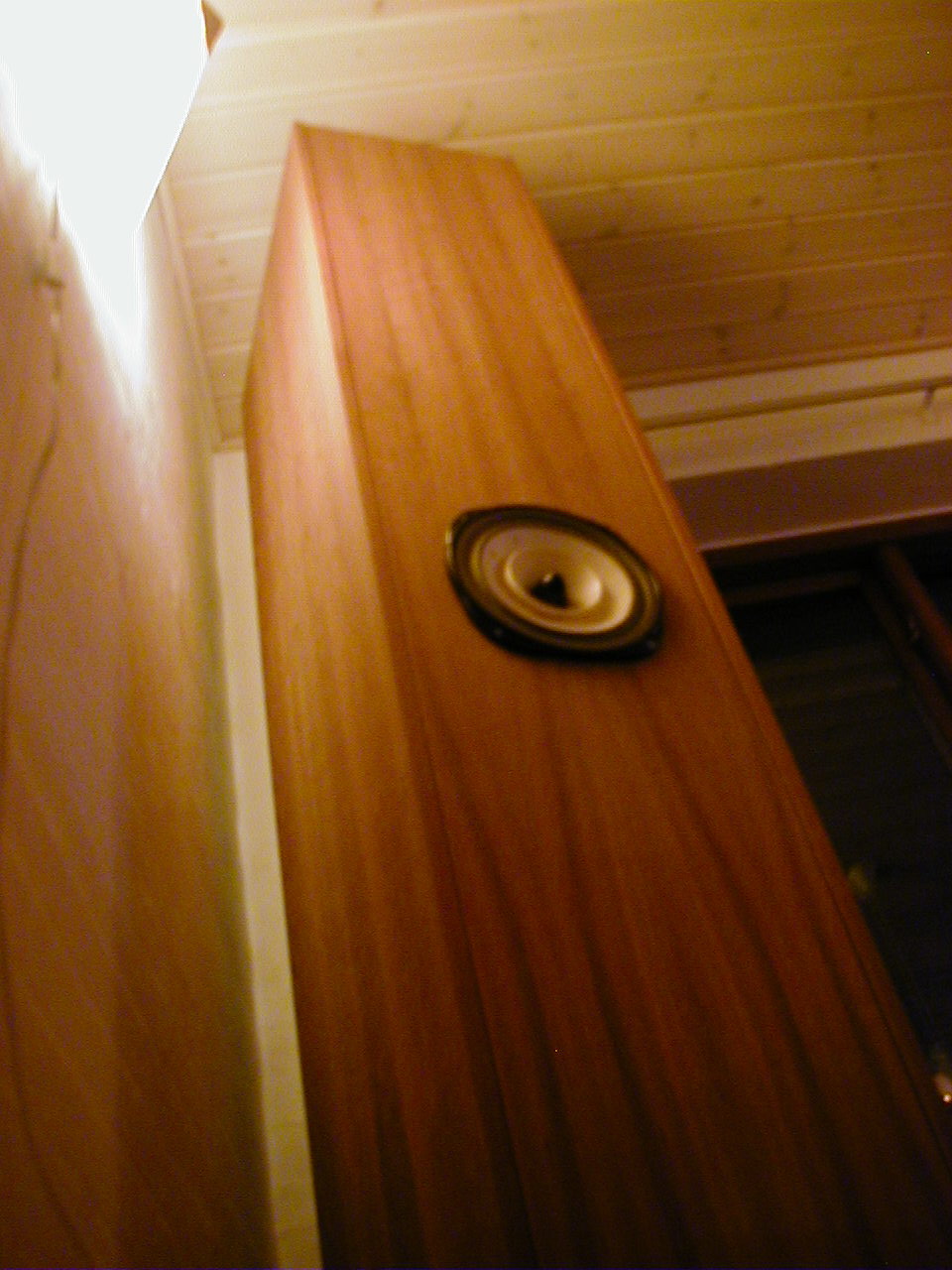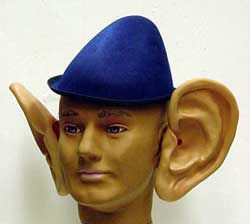| Compromize, compromize and compromize | ||
|
|
Finally finalized
My Horn Story Right there we started out designing our first attempt to reach the point of no compromize. A few weeks later we had built a pair of 2 sections conical corner horns. The driver placed in listening height. The labyrinth going down to the ground, into the corner, up under the ceiling and right out of the cabinet into the room. Coral Beta 8 was the name of the game then. My friends and I were living in the country and that was good. Awfully loud that winter we played. We spent a great deal of time comparing our wonders to other friends' more or less expensive loudspeakers. A feeling I really do recall from that time was pity. You simply do not compare a horn to a shoebox if you don't like to be a killjoy. Those our first attempt horns were a small step for men but a giant leap... When we finally got our arms & ears down again we had to admit that the horns were not only built out of wood, screws & glue. Compromize had sneaked into the project somewhere along the way. The bass most certainly was there, but not every bass note had the same strength and the middletone was perhaps a little behind. Many rivers have run into the ocean since then but I still remember those first cornerhorns with joy. Size does matter. I got married to a girl who was just as dedicated to music as I was. We started out in some small attic and certainly had no room for the two giant loudspeakers. They resurrected in the shape of some furniture and a pair of pure compromize horns to ease the pain. Six months later we returned out into the country and from then on and up till today we constructed several horn systems for better or worse. We learned a great deal about compromize over these years. We found out that we had to build compromise into the project from the very start of designing. Take control so to speak. Many wellknown systems are originally designed for 30 Hz or so. Later in the designing process they get "shortened" and scrinked to fit into reality. Compromize is in control. Grab your bassguitar. Connect it to your gear and play every note from top to bottom. Sometimes it's there. Sometimes it's not. If you want to build an 8" driven exponential cornerhorn for 30 Hz with a reasonably smooth frequency response, the volume of the labyrinth alone exceeds 1 m3 and you still need room for the cabinet walls. In 1996 we built such a horn. The complete roof construction of our house had to be replaced and we grabbed the opportunity to build in a 4.2 m horn subwoofer at the very top over one of the rooms. A simple straight triangular exponential horn. The two sides mounted directly on the main woodwork of the construction and the bottom of the horn fastened to the sides. She takes care of the music 80 Hz down. The rest is delivered by two 80 Hz ordinary exponential freestanding horns. It is amazing what comes out of that triangular back hole in the centre room upstairs. She can play sounds you do not hear, only feel. We finally made it. The no compromize horn... ...NOT... 1. Compromize: If you really turn up the volume you start to hear the low frequencies too, but in the form of cabinet rattle & claytile shaking. Even though we did apply the bottom plate some extra woodwork, I wish we had used thicker, heavier materials overall. Nevertheless, by normal listening levels++ it is still a unique musical experience second to none I heard. I think the triangular shape is a real standing wave assassinator. 2. Compromize The two ordinary sidesystem horns play very well - but - sometimes we get the feeling that they shout at us. "Lowthers shouting" You probably heard (about) it. That's how loud it can be. Over the years we learned to live with this flaw. Do not sit too close and do not play that special music containing those shouting frequencies too loud. You get so much joy from the music anyway. Life is really worth living despite this compromize. It is not possible to create so powerful a driver without introducing that shout, I guessed. In the year 2005 we had our livingroom completely rebuilt and needed some new loudspeakers. This time we would do things just right (read better). We started out by accepting one huge compromize. Musical output down to 30 Hz, bye bye. Today we still have to move our corpses and the redwine bottle upstairs to get that special unchi unchi in our stomachs. The speaker placement left us with an area of 30 x 50 cm only for each speaker and should we install a subthing in the room, there was no room for us and so, it would stop being a living room. The first compromize upstairs we could easily address in our new design. No thin plates, no great areas with equal thickness, just waiting for a swing. The second compromize was harder. We soon rejected the option to start a new driverfactory and make things better. Somewhere I read an article about some odd experiment. You pull out your driver from your horn. You put into the hole some small music playing battery radio and put back your driver. Can you hear the music ? Everyone of our horn constructions up till then (except the sub upstairs) had their labyrinth starting out in a 90 degree direction related to the direction of the waves from the driver. Could it be that the reflexions of those waves did some nasty things. Anyway, we decided that the labyrinth had to start out in the very direction they are created. Today I can tell you that the Lowthers are definately not shouting at me from the results of this design.
My edition of Why Horns I grew up a few hundred meters from the B&O musicgear factory and had easy access to drivers and shoeboxes. Everybody worked there and you could buy stuff at very reasonable prices and once, when one of the storing buildings caught fire, lots of readytosell loudpeakers were thrown out on a nearby field full of kids with philips screwdrivers. Those were the days. Our homemade cabinets were full of drivers and domes and filters. The more the merrier. It was first when I heard the Coral beta 8 I realized that a driver is not just a driver. I guess it was pure coinsidence when we chose this driver for our first horncabinets. Resonably prized and recommended to horns. One 8" Coral fulltone speaker actually removed a curtain from the music experience behind which all our earlier speakers stood mumbling. One driver delivering it all - and then some. This 'some' has definately something to do with clarity and presence. The middletone is to me the most important part of the frequency spectrum and it is here you must reduce the compromizes, when you design a loudspeaker system. Two drivers overlapping in the middletone section destroy the music experience. Only when you are playing music, not containing any info in this overlapping region, will it sound right. Later on we could get Corals no more and had to look around. Fostex or Lowther. Our banking advisor chose Fostex and this was actually not bad but in 1997 we invested in two Lowther DX2, Here we go again. Yet another curtain got ripped off. We found ourselves with a completely new music collection overnight. I know people have different opinions about Lowther drivers. Either they like them or else they hate them. I luuuve them. Had I heard them earlier, I would glady have sold my house to get them. Then again, I don't think they can stand the rain. To sum things up. I'm a fanatic powerfull magnet equipped single driver music lover. I value the middletone very high but it is no real fun if you don't get the highs and not least, the lows. To get them lows from one super effective driver, you need a horn... ...that's why |

